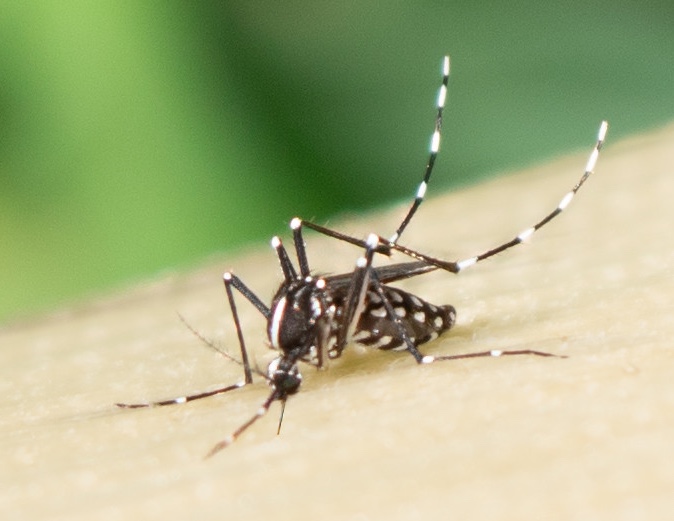Vα14 invariant NKT (Vα14 iNKT) cells are a population of T lymphocytes that have several unique characteristics; many of these are related to their ability to function similarly to cells of the innate as opposed to the adaptive immune system. Like conventional T cells that express an αβ TCR, their development is initiated by positive selection at the CD4, CD8 DP developmental stage in the thymus. However, Vα14 iNKT cell selection is dependent upon expression of CD1d, a MHC class I-like protein that presents lipids rather than peptides, by other DP thymocytes. As the name implies, Vα14 iNKT cells express a TCR with extremely limited diversity, consisting in mice of an invariant alpha chain (Vα14-Jα18) generally paired with beta chains using Vβ8.2, 7 or 2. Vα14 iNKT cells are also distinguished by their tendency to express NK receptors, which is the underlying reason for the name “NKT cells”. They also express T cell activation markers, even (and to a great extent) in germ free mice, hence they appear to develop to become a natural memory cell population based on some type of internal antigen(s). Their tissue distribution also is unusual, as they are found in large numbers in the liver, but they are relatively scarce in lymph nodes. These cells exhibit the unique property of being able to respond very rapidly to antigenic challenge without restimulation, immediately producing a broad spectrum of cytokines, including both IFNγ and IL-4. Vα14 iNKT cells have been found to be important modulators of the response to infectious agents, autoimmunity, tolerance induction, and the response to cancers. Humans have a homologous population with nearly identical specificity, and although the cells tend to be more frequent in mice than humans, clinical trials are underway based on activating human iNKT cells to stimulate antitumor responses. It is thus important to learn more about the properties of these cells and how they can be manipulated to modulate immunity.
One active area of interest of our laboratory concerns the range of antigens to which Vα14 iNKT cells can respond. Previous data from our laboratory and others have determined that Vα14 iNKT cells respond to glycolipids with defined structures, including a ceramide lipid backbone and an α-linked hexose sugar, when presented by CD1d. More recent work has shown that glycolipids capable of stimulating Vα14 iNKT cells are found in several types of bacteria, including the relatively nonpathogenic and ubiquitous species of Sphingomonas organisms, and the spirochete Borrelia burgdorferi, which causes Lyme disease. The antigen in this latter case has a diacyl glycerol lipid rather than a ceramide lipid, a type of lipid more common among microrganisms. Furthermore, mice that lack Vα14 iNKT cells have been shown to be more susceptible to arthritis induced by Borrelia infection. These data suggest that a primary function of Vα14 iNKT cells may be to control bacterial infections. Our laboratory is continuing its efforts to characterize compounds that can act as agonists for the invariant TCR of Vα14 iNKT cells, and to further define the role(s) of these cells in bacterial defense. Recent evidence indicates that gram positive and highly pathogenic bacteria also have antigens for iNKT cells.
Our laboratory has also uncovered evidence for an indirect, antigen-independent mechanism of activation of Vα14 iNKT cells. These cells were shown to respond in vivo to agonists of the TLR family, and this response was dependent on activation of DCs and on IL-12 derived from the activated DCs signaling the Vα14 iNKT cells. It was not inhibited by blockade of CD1d, however, suggesting (self) antigen recognition is not required. Interestingly, unlike the unpolarized cytokine response observed upon stimulation with TCR agonists, Vα14 iNKT cells activated by this indirect, TLR/IL-12-dependent pathway secrete only IFNγ in significant quantities. We have recently shown that this antigen-independent pathway is activated in mice by infection with CMV, and is important for virus resistance in mouse strains that lack a strong NK cell response to CMV. We are continuing our efforts to understand the role of this pathway in the response to viruses and other pathogens.
Long-term efforts in our research group have been directed towards uncovering the unique pathway for the differentiation of Vα14 iNKT cells, which require a different selecting cell type in the thymus that probably imprints the activated phenotype in these cells, including the opening of the gene loci encoding IL-4 and IFNγ. We are investigating the roles of various transcription factors, kinases, and molecules involved in intracellular vesicular traffic in order to understand the differentiation of Vα14 iNKT cells.
We have also have adopted a number of lines of study into the regulation of cytokine production and effector cell responses such, as cytotoxicity, in the response of Vα14 iNKT cells to glycolipid antigens or IL-12 from activated DCs. These include examinations of the effect of antigen structure on the spectrum of cytokines produced after either in vivo or in vitro stimulation, as well as the ability to anergize Vα14 iNKT cells in terms of cytokine production and effector function by prior antigen challenge. We have also initiated studies of the regulation of cytokine gene expression in these cells. We hope that these efforts will allow us to identify means by which the response of iNKT cells can be manipulated to effect desired immunologic outcomes in possible therapeutic applications.



